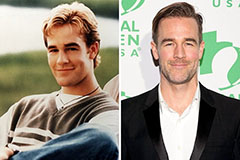Around the annals of specialist wrestling background, couple of champion belts stimulate the very same feeling of eminence, majesty, and famous standing as the WWF Winged Eagle Champion Title Belt. Introduced during a pivotal age for the World Fumbling Federation (WWF), this specific design not only represented the pinnacle of wrestling success yet likewise came to be completely related to several of the largest names and many memorable minutes in the sporting activity's history. The WWF Winged Eagle Belt transcended its function as a plain reward; it became a icon of quality, a substantial representation of a champ's effort, devotion, and supreme accomplishment within the settled circle. Its visual appeal, combined with the legendary figures who proudly wore it around their waists, solidified its location as one of the most beloved and instantly identifiable championship styles in the entire sector.
The late 1980s noted a period of eruptive growth and mainstream popularity for the WWF, mostly sustained by the charisma of Hunk Hogan and the expanding "Rock 'n' Wrestling" period. As the company's exposure and fanbase expanded, there was a requirement for a championship belt that not only looked prestigious however likewise visually symbolized this brand-new age of larger-than-life characters and captivating stories. The existing WWF Champion belt, while legendary in its own right, was ready for an upgrade that would resonate with the advancing visual of the promotion.
The WWF Winged Eagle Belt made its launching in early 1988. While the precise day of its unveiling is frequently debated among wrestling historians, it is widely accepted that Hunk Hogan was the first to wear this new style after preserving his WWF Championship. The belt was a significant departure from its predecessor, flaunting a more complex and aesthetically striking look. The centerpiece of the style was a huge, delicately comprehensive gold plate featuring a stunning eagle with its wings completely outstretched, grasping a banner that proudly presented the WWF logo design. This main image radiated power, liberty, and supremacy, completely lining up with the epic characters that dominated the WWF landscape at the time.
Flanking the central eagle were smaller sized, luxuriant side plates. These side plates were not originally personalized with the champ's name, a feature that would end up being a lot more usual in later championship layouts. Rather, they often featured globe layouts or further embellishments that added to the general regal appearance of the belt. The natural leather band of the WWF Winged Eagle Belt was typically black, supplying a stark contrast to the gleaming gold of the plates and more emphasizing their complex outlining.
The visual impact of the WWF Winged Eagle Belt was indisputable. Its size and fancy design made it wwf winged eagle belt instantly well-known and a desired reward for any type of wrestler aspiring to reach the top of the WWF. It resembled a championship, bring an air of importance and symbolizing that its holder was truly the best in the world. This visual appeal played a crucial duty in boosting the condition of the WWF Championship and making it a sign that fans could conveniently understand and aspire to see their favored wrestlers hold.
Beyond its aesthetic appeal, the WWF Winged Eagle Belt came to be synonymous with an era of epic champions and memorable storylines. Complying with Hulk Hogan's initial reign with the title, a that's who of battling icons happily carried this variation of the championship. "Macho Man" Randy Savage, with his flamboyant design and extreme in-ring character, added an additional layer of prestige to the WWF Winged Eagle Belt during his remarkable reigns. The Ultimate Warrior, with his electrifying energy and passionate connection with the audience, likewise held the title, more sealing its importance during the elevation of his popularity.
The early to mid-1990s saw the WWF Winged Eagle Belt remain the ultimate prize, put on by technical fumbling masters like Bret " Hit Man" Hart, whose regimes were identified by extreme in-ring competition and a strong link with the devoted WWF fanbase. Shawn Michaels, "The Broken heart Youngster," additionally held the title during this period, showcasing his unbelievable athleticism and charm while lugging the iconic belt. Each of these champs brought their one-of-a-kind design and personality to the center, additional improving the tradition and status connected with the WWF Winged Eagle Belt.
Even as the WWF transitioned right into the edgier and even more rebellious "Attitude Period" in the late 1990s, the WWF Winged Eagle Belt continued to be the top reward. " Rock Cold" Steve Austin, the anti-establishment icon that specified the age, notoriously held this variation of the championship before it was at some point changed with the "Big Eagle" style in late 1998. Austin's fiery attitude and defiant personality, integrated with the graph of the WWF Winged Eagle Belt, created a powerful picture that reverberated deeply with the transforming preferences of the wrestling audience. He was the last permanent WWF Champion to use this style, marking completion of an era for this certain model of the title.
The tradition of the WWF Winged Eagle Belt extends far past the wrestlers that held it. It stands for a golden age for the WWF, a period of substantial development and social impact. The belt itself has ended up being a valued artifact for battling followers, typically showing up in historical retrospectives, documentaries, and merchandise. Its renowned style continues to stimulate fond memories and admiration among those that observed the age it defined.
Finally, the WWF Winged Eagle Fumbling Championship Title Belt holds a special area in the hearts of battling fans worldwide. Its impressive design, including the effective winged eagle, perfectly recorded the spirit of a transformative era for the WWF. Extra notably, it was the sign of success for a generation of legendary wrestlers who mesmerized target markets and left an indelible mark on the sector. The WWF Winged Eagle Belt is more than just a champion; it is a classic symbol, representing the peak of success and a cherished item of professional fumbling background. Its image continues to be promptly recognizable and continues to be commemorated as one of the greatest championship designs of perpetuity.
 Edward Furlong Then & Now!
Edward Furlong Then & Now! Angus T. Jones Then & Now!
Angus T. Jones Then & Now! James Van Der Beek Then & Now!
James Van Der Beek Then & Now! Lisa Whelchel Then & Now!
Lisa Whelchel Then & Now! Rossy de Palma Then & Now!
Rossy de Palma Then & Now!